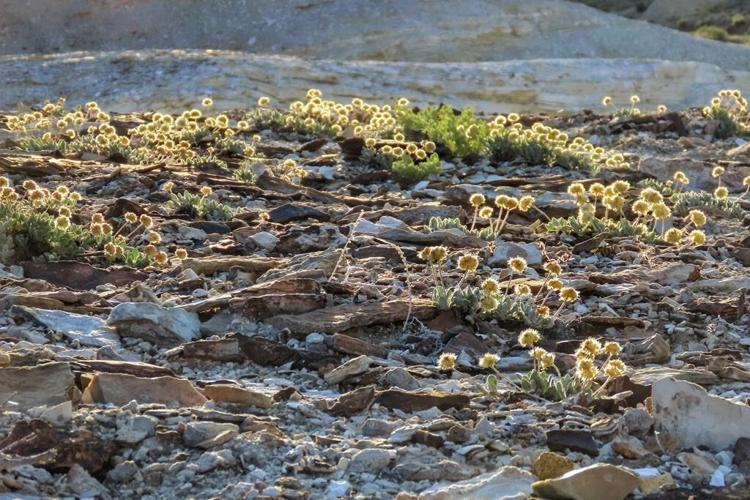
Patrick Donelly/Center for Biological diversity via AP/File
The Biden administration is pushing forward with the environmental assessment of a proposed lithium mine in Nevada, despite concerns from conservationists about its potential impact on an endangered wildflower. The Bureau of Land Management (BLM) recently released over 2,000 pages of documents as part of the draft environmental impact statement for the Rhyolite Ridge mine.
Lithium is a crucial component in the production of batteries for electric vehicles, which aligns with President Biden's clean energy agenda. The administration views the development of domestic lithium resources as essential for powering the transition to clean energy and reducing greenhouse gas emissions.
BLM officials and the Interior Department see the progress in reviewing the lithium-boron mine project as a step toward supporting responsible domestic mineral development. Steve Feldgus, the deputy assistant Interior secretary for land and minerals management, emphasizes the importance of cooperation between federal agencies to address environmental concerns while promoting critical mineral development.
However, environmentalists express reservations about the potential impacts of the proposed mine on the Tiehm's buckwheat, an endangered wildflower found near the proposed site. Patrick Donnelly, the Great Basin director at the Center for Biological Diversity, criticizes the administration's approach, describing it as prioritizing climate change mitigation over wildlife protection. The Center for Biological Diversity has been advocating for federal protection of the Tiehm's buckwheat since 2019.
Nevada is already home to one lithium mine, and another is under construction near the Oregon border. The demand for lithium is expected to increase significantly by 2030, driven by the growing popularity of electric vehicles.
The BLM's draft environmental impact statement for the Rhyolite Ridge mine outlines several options for the project, including a "no-action alternative." The preferred option involves a plan by Ioneer Ltd., the Australian mining company behind the project, to reduce the destruction of critical habitat for the Tiehm's buckwheat. The plan includes measures such as habitat conservation efforts and a controversial proposal to propagate and transplant the wildflowers.
Bernard Rowe, managing director of Ioneer, asserts that the mine can coexist with the endangered wildflower while supporting the transition to clean energy. He emphasizes the company's commitment to conservation efforts and its readiness to begin lithium production as early as 2027.
Despite the proposed mitigation measures, conservationists remain skeptical about the project's potential impact on the Tiehm's buckwheat. They argue that any destruction of critical habitat could have severe consequences for the survival of the rare plant species. Naomi Fraga, director of conservation at the California Botanic Garden, emphasizes the need for stringent protection measures to safeguard the wildflower's habitat.
Critics also raise concerns about the expedited review process for the mine, citing internal documents obtained from the BLM that indicate a rushed schedule. Scott Distell, the BLM's project manager, expresses reservations about the aggressive timeline in emails to his superiors, highlighting the need for thorough evaluation of the project's environmental impacts.
The debate over the Rhyolite Ridge mine reflects broader tensions between economic development and environmental conservation. As the Biden administration seeks to promote clean energy initiatives, it faces scrutiny over its approach to balancing environmental protection with mineral resource development. The outcome of the review process will have significant implications for the future of lithium mining in the United States and the conservation of endangered species like the Tiehm's buckwheat.















